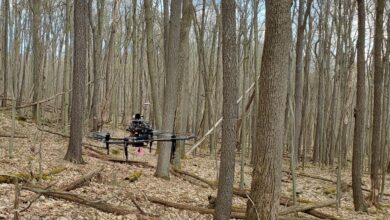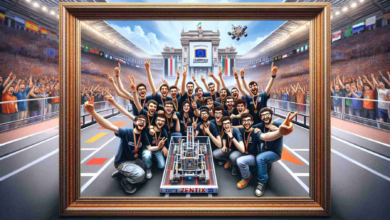Watch AI-powered robot climb the Great Wall of China

The field of humanoid robotics has advanced significantly in recent times. We’ve seen new iterations of robots excelling in various tasks, making them highly effective for both domestic and industrial services.
Now, China-based Robot Era’s offering has showcased its prowess by becoming the first humanoid to climb the Great Wall of China.
In a video released by Robot Era, the full-sized humanoid prototype XBot-L, standing 1.65 meters tall, is shown walking along sections of the Great Wall, waving hello, showcasing some martial arts moves, and performing various other movements.
The Robot Era team aimed to demonstrate XBot-L’s locomotion, dexterity, and self-balancing capabilities, enhanced by perceptive reinforcement learning algorithms.
Perceptive algorithms for locomotion
The weathered stone walls, uneven pavements, and dark archways at the Great Wall of China present a significant challenge for any bipedal humanoid robot.
Wheeled robots or humanoid models without advanced kinematic support usually face challenges on such surfaces, as they often stumble on uneven terrain or over potholes in long flights of stairs.
It looks like the XBot-L only covered a short distance on the Great Wall of China trail. Its missing leg covers and duck tape around its waist suggest that it might have stumbled a few times while trying to complete the route.
However, it is commendable that XBot-L overcomes obstacles through its advanced perceptive reinforcement learning (RL) algorithms. These innovations enable the robot to feel its surroundings, maintain balance, and adapt its walking speed and step to provide smooth navigation even in these challenging conditions.
“Perceptive RL algorithms help to strengthen the robot’s perceptive and decision-making capacity in the face of unfamiliar terrains. The robot thus can recognize complex road conditions and adjust its walking stance in a timely manner,” said Yue Xi, co-founder of Robot Era, in a statement.
Robot Era also recently unveiled a highly dexterous hand, Xhand, designed exclusively for embodied AI applications.
Robot Era’s smart advancements
Robot Era is a company incubated by the Institute of Cross-disciplinary Information Sciences of Tsinghua University in Beijing.
The firm’s website claims that it has made significant strides in the field of embodied general intelligence, developing a humanoid robot body based on proprioceptive actuators.
Its robots feature self-developed, high-torque-density modular joints and an integrated structural design. Utilizing advanced materials such as high-strength alloys, carbon fiber, and engineering plastics, the company claims to have enhanced the robot’s strength and stability while maintaining an attractive appearance.
On the intelligence front, the company has integrated a large language model and advanced force control algorithms into their robots. According to Robot Era, this allows its family of robots to exhibit high dynamic performance, better understand humans, and effectively serve the public.
Unlike some legged robots designed to climb up and down stairs without perception algorithms, Robot Era designs its robots to determine real-time changes in their environment and recognize obstacles along their path
“Compared to ‘blind walking,’ our robot displays better traversability and stability on complex surfaces,” said Xi.
Even though its XBot-L is impressive for a new robotics startup, offerings from fellow Chinese firm Unitree and Boston Dynamics’ new Atlas humanoid are much faster and more flexible.
ABOUT THE EDITOR
Jijo Malayil Jijo is an automotive and business journalist based in India. Armed with a BA in History (Honors) from St. Stephen’s College, Delhi University, and a PG diploma in Journalism from the Indian Institute of Mass Communication, Delhi, he has worked for news agencies, national newspapers, and automotive magazines. In his spare time, he likes to go off-roading, engage in political discourse, travel, and teach languages.



